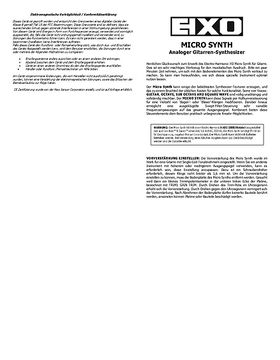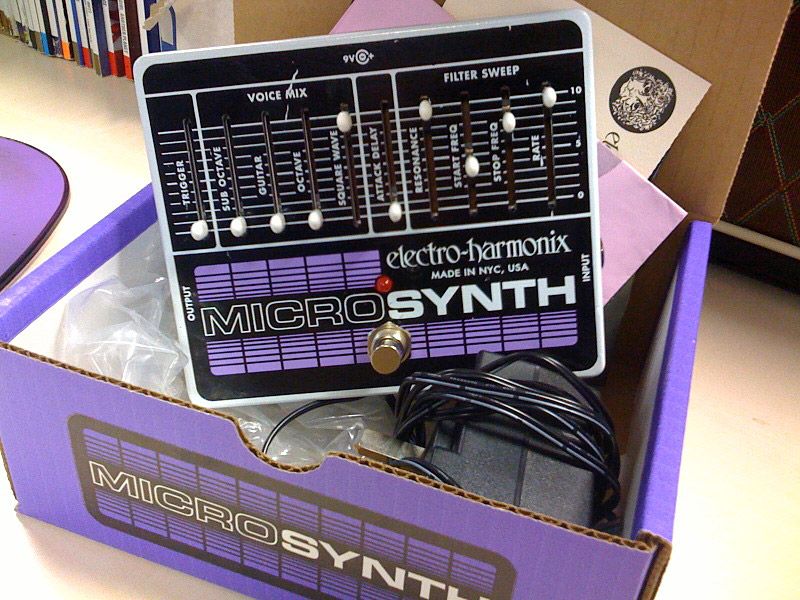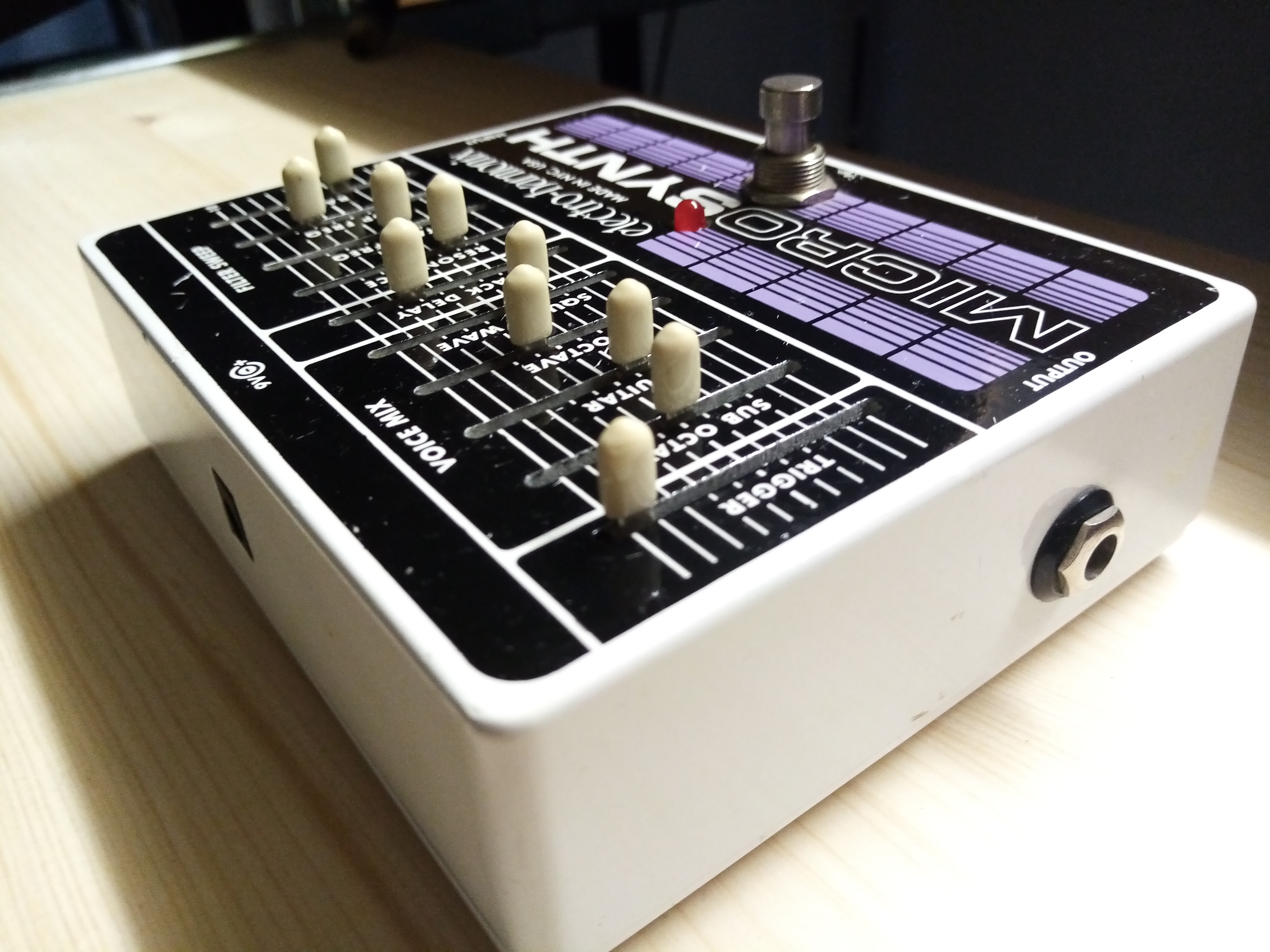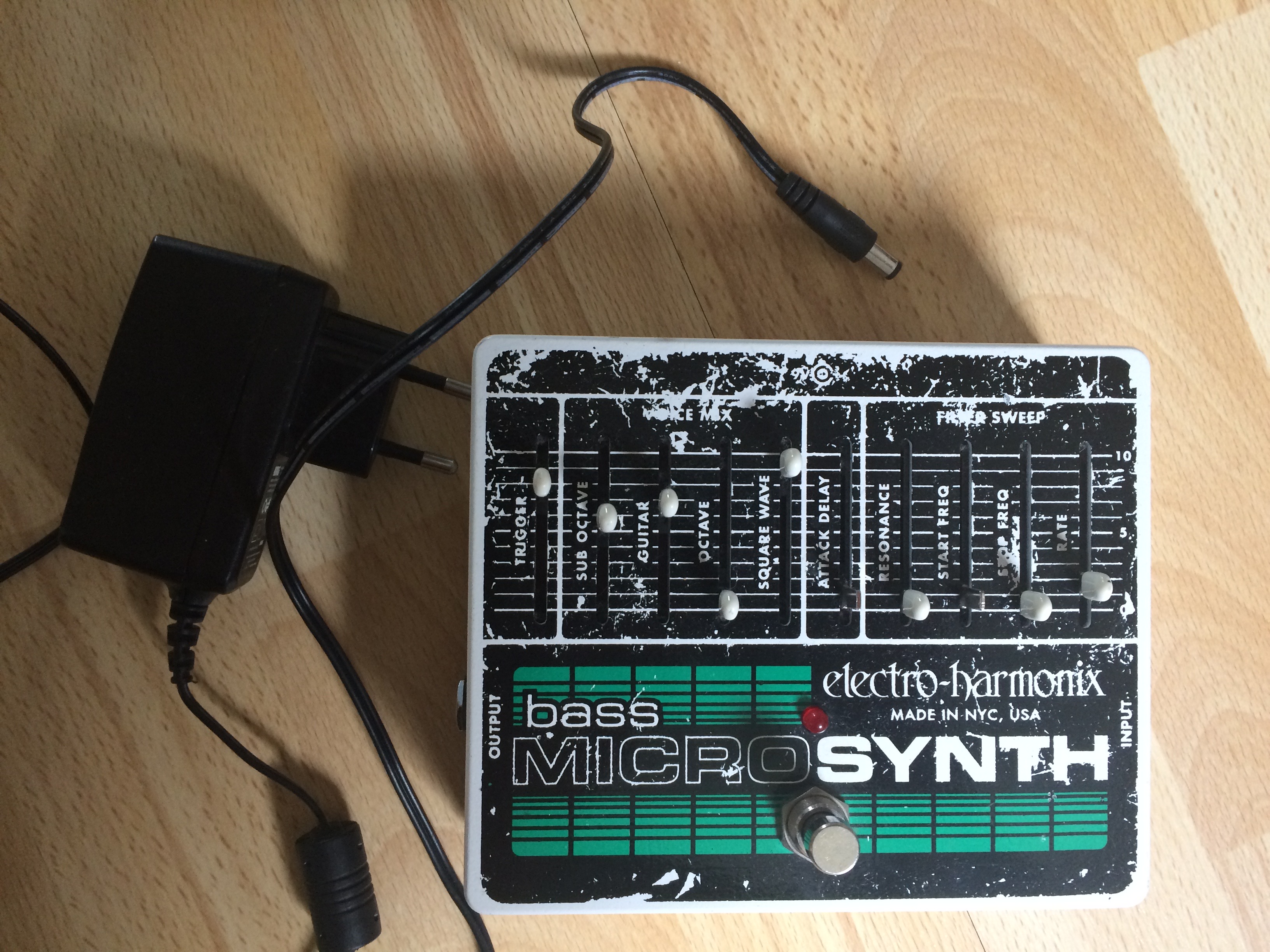
#Electro harmonix microsynth used manual
This will power the unit just fine, for anyone who looks at the manual and thinks that may be unfortunate.
#Electro harmonix microsynth used plus
I use the Voodoo Labs Pedal Power 2 Plus (a common pedalboard power supply), which has each plug on an independent channel. EHX highly recommends that you run it using the adapter they provide. The last note I’d like to mention is that the BMS cannot be run off a daisy-chained 9v power supply. If you’ve ever gotten to try out a piece of vintage analog synth gear, you’d find tons of little things like this that you’d wish were improved. This is very helpful, but something to be mindful of. EHX claims (which I find to be VERY true) that if you put a compressor in front of the BMS in your signal chain, sustain will be greatly increased. If you need a long, sustained note, very often the BMS will simply cut off eventually, with no decay. So, while this is a little bit inconvenient, if you just find what works for you, you’ll forget about it in no time.Īnother small quirk is that holding notes out can be an issue. I’ve gone ahead and made my Fodera just THE bass to use with the BMS, and that works great for me on many gigs. EHX is quick to point out that different pickup settings will affect what sound you will get from the BMS, and so you might find yourself opening the box depending on how many basses you’re using it with. So, you need to go in and change the trim setting to handle the different gain. It’s pre-set for a passive bass, so if you use something with considerably higher output (such as my Fodera Emperor 5 with the Mike Pope preamp), the BMS will distort from the hotter signal going into it. One thing that turned out to be a little troublesome was the trim knob inside the chassis. I had absolutely no problem getting the tones that I wanted for all the songs that I’ve needed to learn, and came up with some great things for new projects, as well. Once you start to get a handle on that, you can craft new sounds to take your playing to the next level. However, it’s a lot of fun to start off with a template and adjust the sliders to begin figuring out what each one actually does (for instance, the square wave voice works as a distortion tone). What’s great is that you could theoretically stop there. MiniMoog, Taurus pedals, Arpsynth, it’s all there.

These settings are invaluable, as they are the ones that most directly emulate the devices that you’re probably buying it to emulate anyway. How do you even know where to begin? Luckily, the BMS comes with multiple pages of template settings (as opposed to most pedals which come with one or two settings to start you off). So, you end up with 10 independent controls on the BMS. It features a 2-pole resonant filter, 4 different voices to be mixed and matched (including my favorite, the sub octave…you know, to give the crowd the “brown notes”), start/stop frequency sliders for control over the filter sweep, and an attack time control for fading notes in and out. The BMS is all analog design, optimized for the bass guitar.


Surprise, surprise…many of the sounds I was looking to get were coming from his Bass Micro Synth. Right around that same time, I finally got a look at what kind of pedal setup was being used by Owen Biddle (formerly of The Roots) with his incredibly experimental group, Mister Barrington. The keyboard player was doubling it with me, but that was leaving a number of the other keyboard flourishes unattended. Playing a song like “You Dropped A Bomb On Me” just doesn’t work without the bass riff being played correctly.

How cool is that?! I got especially excited about this product as I was needing to play a lot of Prince and Gap Band stuff on a gig I was doing at the time here in Nashville with Terry Greene & The Undercovers. The Bass Micro Synth is a true analog synthesizer controlled by your bass guitar. If you’re just out making it happen in the clubs, there is no better way to go than the Electro-Harmonix Bass Micro Synth. If you get the bass gig with Ne-Yo, then yes, you’re probably going to have to learn to play keyboard bass so that you can use the exact patches from the record. Today’s pop music contains just as many sonic challenges as the music of the Gap Band, Michael Jackson, Prince, etc. If you want to get your sound closest to the records, there’s a lot of stuff that you may need to be using. One of the gigs that makes a bass player cringe most in terms of authentic sound production is a decades-spanning Top 40 pop gig.


 0 kommentar(er)
0 kommentar(er)
